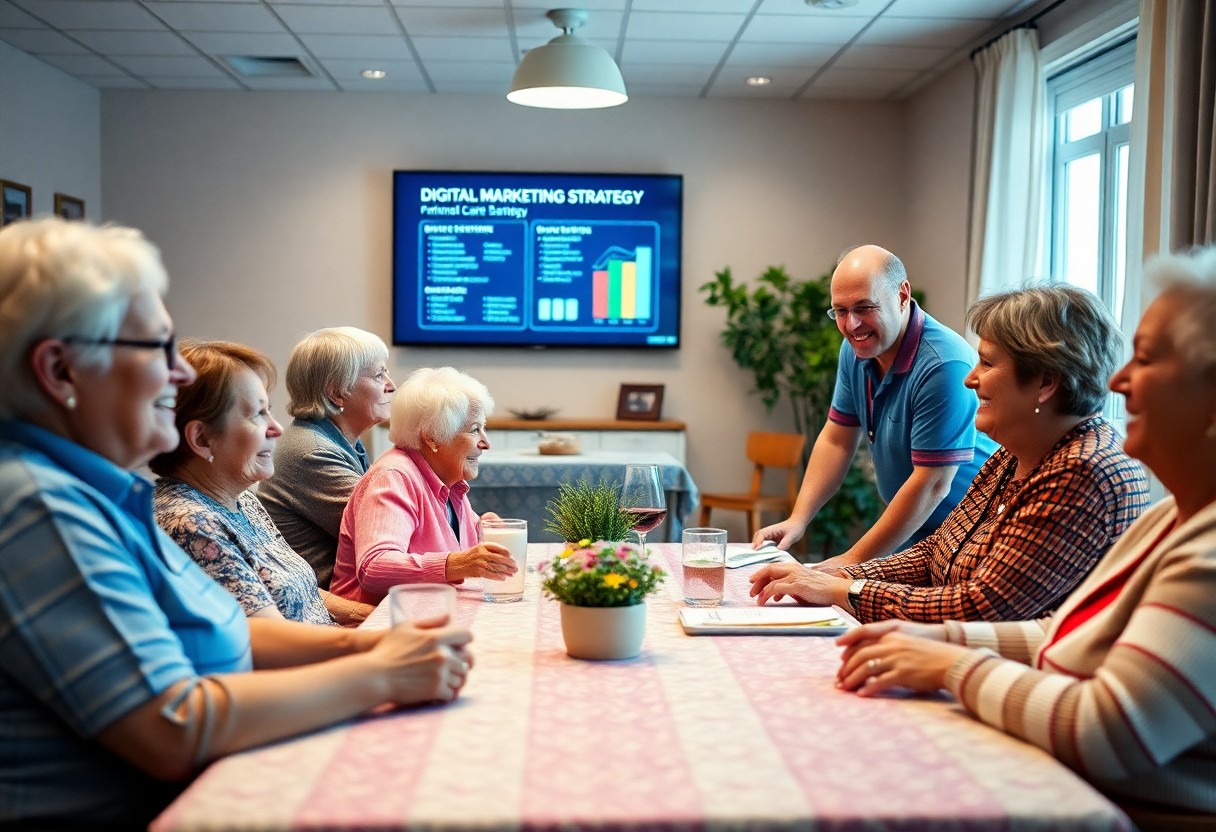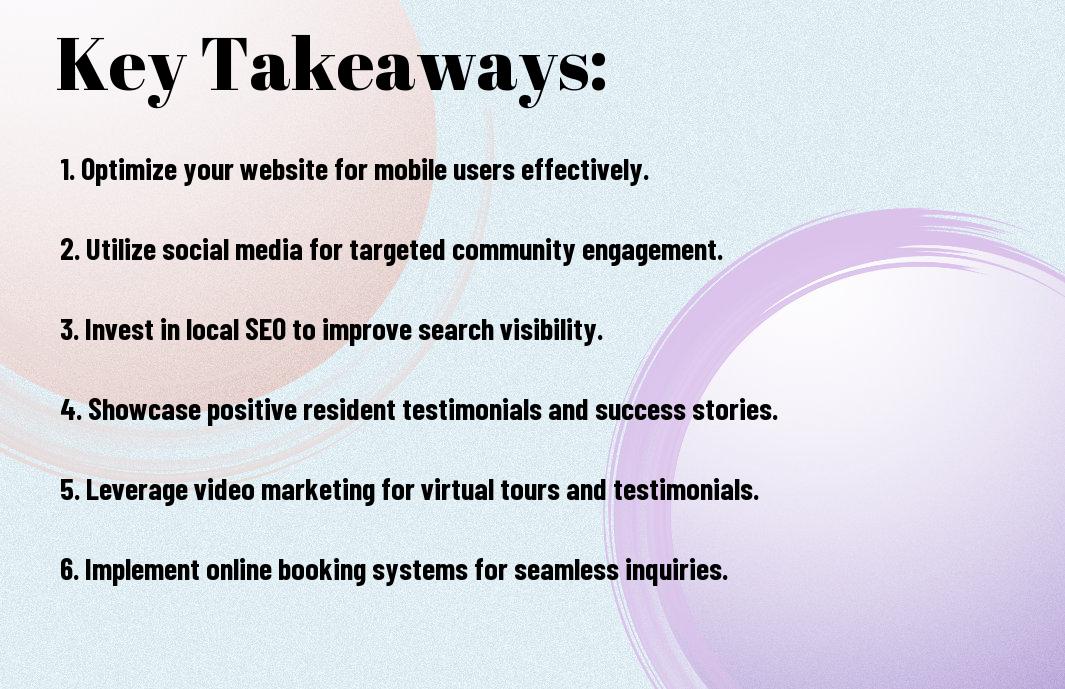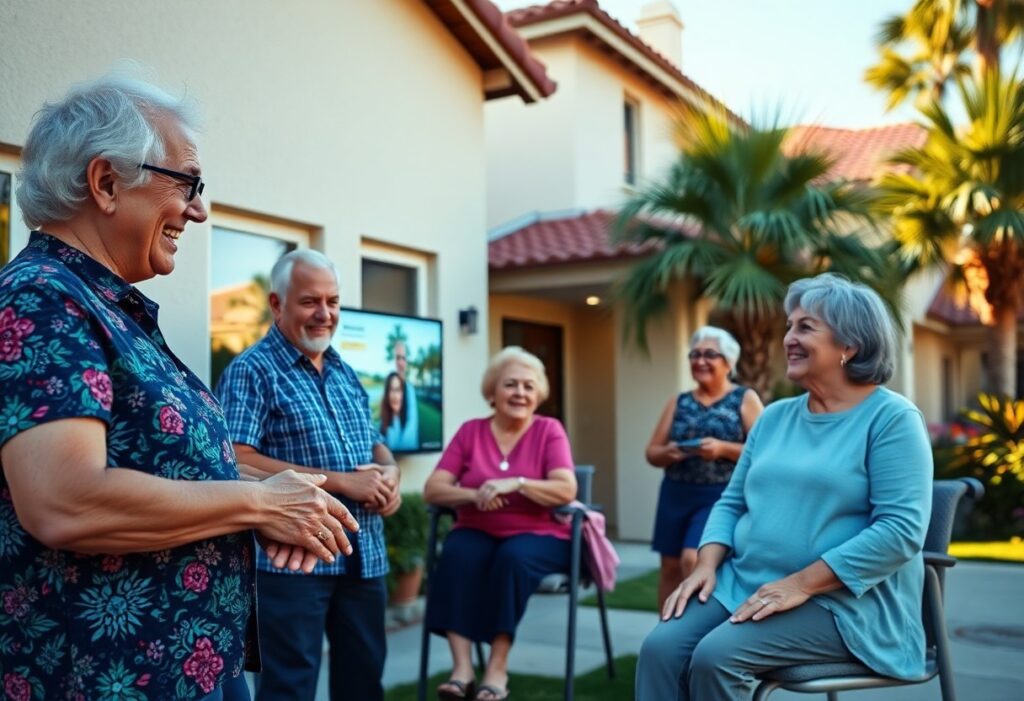With the increasing competition in the senior care industry, you may find it challenging to maintain high occupancy rates at your facility. Implementing effective digital marketing strategies can significantly increase your visibility and attract more residents. In this post, you will discover seven necessary secrets that will enhance your online presence, engage potential clients, and ultimately, boost your occupancy rates. By leveraging these powerful tactics, you can secure your facility’s success in a rapidly evolving market.

Key Takeaways:
- Targeted Advertising: Utilize targeted digital ad campaigns to reach specific demographics that are likely to need senior care services.
- Engaging Content: Create informative and engaging content that addresses the concerns of families and potential residents, establishing trust and authority.
- SEO Optimization: Implement effective SEO strategies to improve your website’s visibility on search engines, making it easier for potential clients to find your services.
- Social Media Engagement: Maintain active social media profiles to connect with the community and showcase the unique aspects of your facility.
- Online Reviews: Encourage satisfied residents and their families to leave positive reviews, as these can significantly impact the decision-making process of prospective clients.
Understanding the Senior Care Market
The senior care market is evolving rapidly, influenced by numerous factors such as shifting consumer preferences, advancements in technology, and changing healthcare regulations. As a provider, you need to be well-versed in these dynamics to effectively attract and retain residents. The more you understand these elements, the better positioned you will be to tailor your services and marketing strategies to meet the needs of your target demographic.
Current Trends in Senior Care
An increasing number of seniors are seeking personalized, high-quality care in a comfortable and engaging environment. This trend is underscored by a preference for communities that offer a variety of activities designed to enhance the quality of life. It’s necessary for you to create an inviting atmosphere that not only focuses on health care but also fosters social interaction and holistic well-being. Incorporating technology into your services, such as telehealth options and user-friendly resident applications, can significantly improve your appeal among tech-savvy families and their loved ones.
Demographic Shifts Impacting Occupancy
Current demographic shifts are playing a transformative role in senior care. With the aging Baby Boomer population, the demand for senior living options is increasing, which provides a significant opportunity for you to capture this growing market. Additionally, there is a rising number of dual-income households and more informed consumers who are looking for care solutions that align with their lifestyle preferences and values. Understanding these shifts allows you to better strategize your offerings and messaging to resonate with potential residents and their families.
Considering the implications of these demographic trends, it’s necessary to note the shift towards a greater emphasis on quality of life and personalized care. The aging population is not only larger but more diverse, with varying needs and expectations. If you can adapt your marketing efforts to address these changes—emphasizing elements like social engagement, technology integration, and tailored wellness programs—your occupancy rates can see significant improvement. Ignoring these demographic shifts may leave your community at risk of falling behind in an increasingly competitive market.
The Importance of Digital Marketing for Senior Care
One of the biggest challenges in senior care is maintaining high occupancy rates. As the industry evolves, so does the way families search for care options. Traditional marketing methods, such as print advertisements and flyers, no longer resonate with today’s digital-savvy consumers. Therefore, embracing digital marketing strategies is imperative for maximizing your reach and connecting with families in need of your services.
Why Traditional Marketing Falls Short
By relying on traditional marketing methods, you may find yourself struggling to capture the attention of potential clients. These techniques often yield limited visibility, and their effectiveness continues to dwindle as more people turn to the internet for information. Families seeking senior care are increasingly engaging with digital platforms to research options, read reviews, and compare services. In this landscape, sticking to outdated marketing practices can leave your community invisible to those who need it most.
The Role of Online Presence
With a solid online presence, you can attract and engage potential residents and their families by showcasing the unique features of your senior care community. Your website, social media, and online listings act as the digital storefront for your services, allowing you to present imperative information clearly and effectively. Furthermore, positive reviews and testimonials from current residents and their families can significantly enhance your credibility and reputation, making your community a more attractive option for those looking for care.
Also, maintaining an active online presence reinforces your community’s dedication to transparency and responsiveness. Engaging with families through social media, responding to inquiries promptly, and sharing valuable content can elevate your brand and create a sense of connection. When families feel informed and valued, they are more likely to consider your facility as a comfortable, trustworthy home for their loved ones. Embracing digital marketing and prioritizing a robust online presence can ultimately lead to higher occupancy rates and foster lasting relationships with residents and their families.
Leveraging Social Media to Attract Residents
Now, you may be wondering how social media can significantly impact your senior care occupancy rates. The truth is, by utilizing social platforms effectively, you can reach a larger audience and connect with families looking for the best options for their loved ones. Leveraging the power of platforms such as Facebook, Instagram, and LinkedIn can enhance your outreach efforts and build a community around your facility, ultimately driving interest and inquiries. It’s crucial to understand which platforms are most suited for your target audience, as each platform caters to different demographics and types of content.
Choosing the Right Platforms
To effectively attract residents to your senior care facility, you must identify the platforms that best align with your goals. Facebook is often a good starting point, as it provides a friendly interface for families to share experiences and ask questions about your services. Additionally, Instagram allows you to showcase vibrant images of daily life at your facility, which is appealing to potential clients. LinkedIn can also be advantageous for professional networking and sharing informative articles related to senior care, appealing to decision-makers and families seeking quality options for their loved ones.
Engaging Content Strategies
Engaging content strategies are the heart of your social media presence and can make a significant difference in how potential residents perceive your facility. You want to create content that resonates with your audience, offering insights into life inside your community and highlighting the supportive environment you provide. Utilizing a mix of videos, testimonials, infographics, and engaging posts can strengthen your online persona and build trust among families. By responding to comments, sharing success stories, and keeping your content versatile, you keep your audience interested and invested in what your facility has to offer.
Choosing to share behind-the-scenes glimpses, activities, and events can showcase the vibrant life at your facility, helping families envision their loved ones thriving within your walls. Strong visuals accompanied by heartfelt narratives can evoke an emotional connection, making potential residents and their families feel more inclined to reach out and explore your services. Ensuring you maintain a regular posting schedule bolsters your visibility, fostering a sense of community and trust among your audience.
Search Engine Optimization (SEO) for Senior Care Communities
All senior care communities must recognize the importance of Search Engine Optimization (SEO) as a vital part of their digital marketing strategy. With more families turning to online resources when searching for senior living options, optimizing your online presence can help ensure your facility appears prominently in search results. To dive deeper into effective strategies, consider checking out 7 Digital Marketing Strategies for Senior Living – Aline, which offers further insights into enhancing your occupancy rates through digital marketing.
Keyword Research Techniques
One imperative component of SEO is understanding which keywords your potential residents and their families are using to search for senior care services. Begin by identifying the most relevant terms and phrases that relate to your community. Tools like Google Keyword Planner and Ubersuggest can be incredibly helpful in uncovering popular search queries. By incorporating these keywords into your website content, you significantly increase the likelihood of attracting the right audience to your facility.
Optimizing Website Content
The next step is to make sure that your website content is optimized for both search engines and visitors. This involves using the keywords you’ve identified in strategic locations such as titles, headers, and within your text. Additionally, ensure that your site provides valuable information that addresses common questions or concerns that prospects may have. A well-structured website not only improves your SEO performance but also enhances user experience, leading to a higher likelihood of inquiries and visits.
Care should be taken to ensure that your content is relevant, engaging, and free from overly technical jargon. Highlight your community’s unique offerings, services, and testimonials that resonate with your target audience. By relating to their needs and showing how your facility can make a positive impact in their lives, you create a compelling reason for them to choose your services over competitors. Making these adjustments can elevate your online presence and boost your overall occupancy rates.
Harnessing the Power of Online Reviews and Testimonials
Once again, in the competitive landscape of senior care facilities, the impact of online reviews and testimonials cannot be overstated. Prospective residents and their families increasingly turn to the internet for recommendations before making a decision about where to live. By effectively leveraging positive feedback, you can enhance your facility’s reputation and increase occupancy rates. It’s vital to create an environment that encourages satisfied residents and their families to share their positive experiences through online platforms such as Google, Yelp, and social media.
Encouraging Positive Feedback
For your facility to thrive, actively encouraging positive feedback from happy residents and their families should be part of your marketing strategy. Integrate simple and effective methods, such as follow-up calls or personalized emails requesting reviews after a significant event or milestone. You can also showcase these testimonials prominently on your website and social media, allowing potential residents to see firsthand the uplifting experiences your community offers. Highlighting individual stories can create an emotional connection, making your facility more relatable and appealing.
Managing Negative Reviews
Reviews, whether positive or negative, shape your facility’s image online. You’ll inevitably face negative feedback, but how you respond can make all the difference. Responding promptly and professionally shows that you value input from residents and their families, which can reassure potential clients. Acknowledge concerns and provide solutions to demonstrate your commitment to improving the resident experience. This approach can turn negative impressions into opportunities for growth, helping you strengthen your reputation.
Even when dealing with challenging reviews, it’s important to approach the situation with *empathy* and *understanding*. Acknowledge the reviewer’s issues while highlighting your commitment to resolving them. By publicly addressing complaints and demonstrating how you’ve improved as a result, you not only show transparency but also attract potential clients who appreciate your dedication to making things right. Engaging with negative feedback in a constructive manner reflects your facility’s values and can ultimately build trust with prospective residents.
Utilizing Paid Advertising for Rapid Visibility
Despite the challenges faced by senior care facilities, leveraging paid advertising can significantly increase your visibility in a competitive market. With options like social media ads and search engine marketing, you have the opportunity to reach a broader audience quickly. For those eager to stay ahead of the curve, consider keeping an eye on 7 Senior Care Marketing Trends in 2025, which can provide insights into optimizing your advertising strategy for maximum impact.
Paying Per Click (PPC) Campaigns
For immediate visibility, employing Pay Per Click (PPC) campaigns can be highly effective. With PPC, you only pay when a user clicks on your ad, allowing for a budget-friendly approach that can yield significant returns. By targeting specific keywords relevant to senior care, you invest directly in reaching potential clients searching for your services. This immediate traffic can lead to higher occupancy rates for your facility, enhancing your bottom line in no time.
Targeting Your Ideal Audience
The success of your paid advertising relies heavily on the ability to target your ideal audience effectively. Understanding who your potential clients are—often adult children of seniors or seniors themselves—enables you to tailor your messaging and advertising placements to connect with them directly. Utilizing demographic filters and interests in platforms like Facebook and Google Ads can help make your campaigns more efficient, reaching those who are actively searching for care options.
Consequently, refining your audience targeting can lead to higher engagement and conversion rates. By analyzing data from previous campaigns and adjusting your strategy accordingly, you can discover which demographics or geographic locations yield the best results. Optimize your ads to resonate deeply with your target market, creating a sense of urgency that encourages them to reach out to your facility. This focused approach not only drives results but also builds a stronger relationship between your services and the needs of potential residents.

Summing up
Upon reflecting on the strategies discussed, it’s clear that boosting your senior care occupancy rates requires a comprehensive digital marketing approach. By leveraging targeted advertising, engaging social media content, and an optimized website, you can establish a strong online presence that speaks directly to your audience. Each of the seven secrets highlighted provides you with foundational tools that, when combined, can significantly enhance your facility’s visibility and appeal to potential residents and their families.
As you implement these digital marketing tactics, it is necessary to consistently analyze their effectiveness and make adjustments where necessary. You have the opportunity to forge meaningful connections within your community, showcasing the exceptional care and services your facility offers. The result will not only be a higher occupancy rate but also a more profound sense of trust and engagement with those considering their options for senior care.
FAQ
Q: What are some effective digital marketing strategies to fill beds in senior care facilities?
A: Effective digital marketing strategies include enhancing your online presence through SEO optimization, utilizing social media platforms to engage potential clients, running targeted ad campaigns on platforms like Google and Facebook, creating informative and engaging content on your website, and leveraging online reviews and testimonials to build trust with families seeking senior care options.
Q: How can social media contribute to increasing occupancy rates in senior care facilities?
A: Social media can significantly contribute by allowing senior care facilities to connect with families directly. Engaging content, such as videos showcasing daily activities or testimonials from residents, can resonate with audiences. Additionally, sharing informative articles and responding promptly to inquiries can foster a community feeling and encourage more families to consider your facility.
Q: What role do online reviews play in influencing prospective clients for senior care facilities?
A: Online reviews are integral in shaping public perception of senior care facilities. Positive reviews can enhance credibility, while negative feedback can deter prospective clients. Actively managing your online reputation by encouraging satisfied families to leave reviews, responding to feedback, and addressing concerns can significantly impact occupancy rates.
Q: How can email marketing be utilized to boost occupancy in senior care homes?
A: Email marketing can be a powerful tool for keeping in touch with potential clients. Facilities can nurture leads by sending regular newsletters featuring updates, success stories, and helpful resources. Offering targeted information based on the recipient’s interests, such as memory care options or community events, can effectively engage families and prompt them to reach out for more information.
Q: What are some key metrics to track the effectiveness of digital marketing efforts in senior care?
A: Important metrics to track include website traffic, conversion rates, social media engagement rates (likes, shares, comments), lead generation statistics from email campaigns, and the number of inquiries or tours scheduled as a result of digital marketing initiatives. Analyzing these metrics can provide valuable insights into what strategies are working and where adjustments may be needed to improve occupancy rates.







